
[Untitled]: photo by aaronbergerfoto, 20 April 2017

[Untitled]: photo by aaronbergerfoto, 20 April 2017

[Untitled]: photo by aaronbergerfoto, 20 April 2017

Tompkins Square Park [NYC]: photo by Matt Anderson, 4 May 2017

Seduction [Tangier-Tetouan, Morocco]: photo by Alfredo Oliva Delgado, 28 April 2017

Seduction [Tangier-Tetouan, Morocco]: photo by Alfredo Oliva Delgado, 28 April 2017

[Untitled, Tel Aviv]: photo by Gabi Ben avraham, 24 August 2016

[Untitled, Tel Aviv]: photo by Gabi Ben avraham, 24 August 2016

[Untitled, Tel Aviv]: photo by Gabi Ben avraham, 24 August 2016

**: photo by Peter Kool, 10 May 2017

**: photo by Peter Kool, 10 May 2017

**: photo by Peter Kool, 10 May 2017

[Untitled]: photo by Artyt Lerdrakmongkol, 9 May 2017
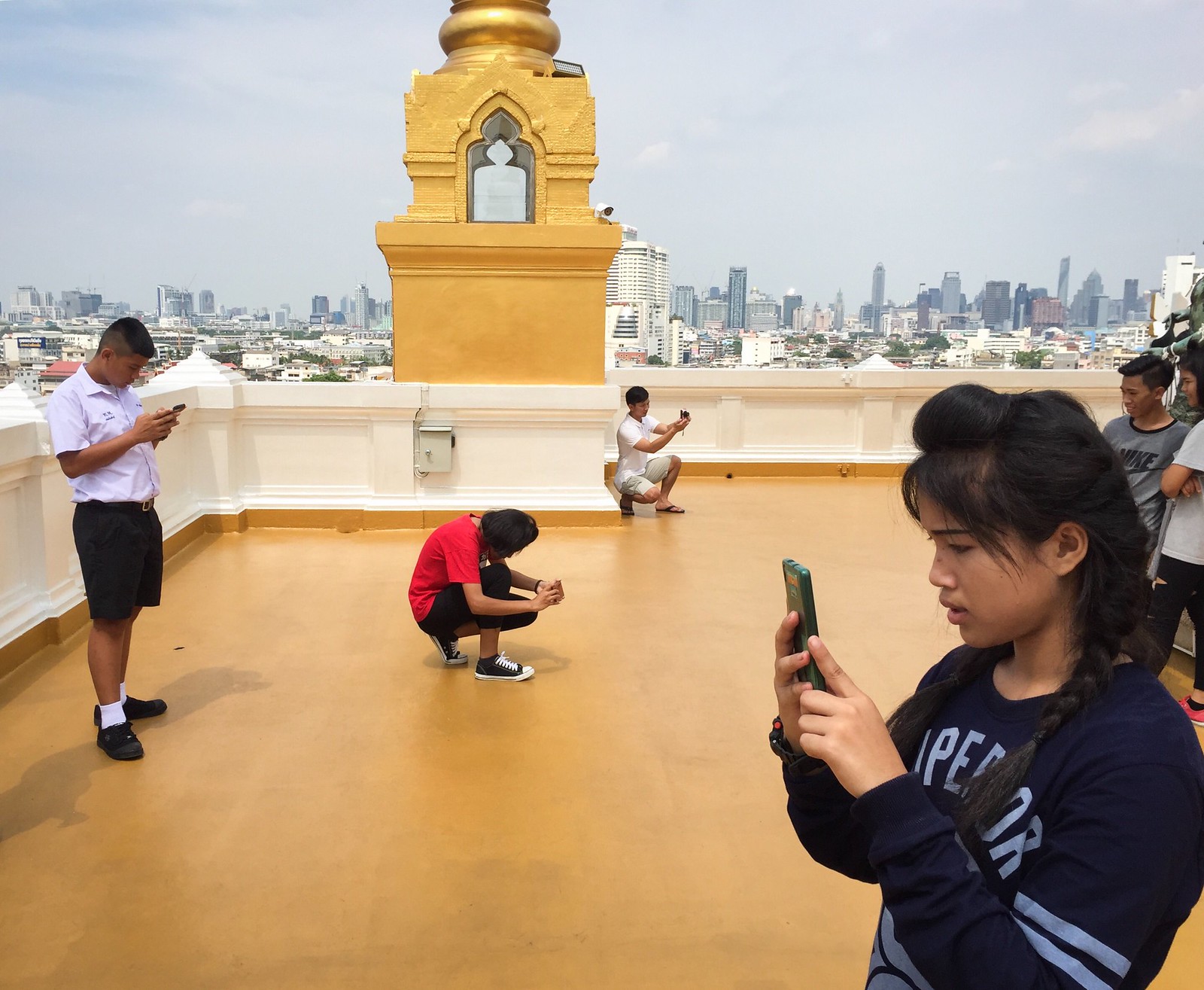
[Untitled]: photo by Audsadang Satsadee, 7 May 2560

[Untitled]: photo by Audsadang Satsadee, 7 May 2560

[Untitled]: photo by Audsadang Satsadee, 7 May 2560
Flopping around in the hotbox with a large order of King Shit Ingots
Golden. That's what the cowboy porn star who had taken a wrong turn at Reno
and ended up at the redneck patriot army wildlife refuge siege trash accumulation site
in the waste spaces of eastern Oregon, late one bone cold night, with a bag
of weed and a rambler's philosophy, said, over a crackling campfire
to an audience of nobody, save the great great great great grandson of Dwight Frye,
Crackle, pop, silence, Golden. It was cold
that night and it is cold tonight, and every night now, and getting colder
Down here by Boulder dam, and that masked man ...
Who was that masked man? Nobody know. He gone. And the ghost of LaVern Finicum, restless,
still drifts over the boneyard. Golden. See that blue tarp over there? That's where
He spoke the words we would be remembering him by tonight,
had we been there to hear him, shaking, our teeth chattering, feeling the wind chill
Approaching the hyperdrive zone and not knowing
whether it's molten gold that's pouring over us, or simply lava from an unpredicted
eruption, and not really being made to feel all that secure
by the shot gun resting in the ill fated epic hero's bony lap, but whatever. Awesome. Golden. What
was that noise? You hear that? Turn off
that light. See that? Something moving up there on the ridge line. I swear I saw it. Jeff's the name.
14 May 2560

[Untitled]: photo by aaronbergerfoto, 2 May 2017

[Untitled]: photo by aaronbergerfoto, 2 May 2017

[Untitled]: photo by aaronbergerfoto, 2 May 2017

The curve. A sad dog walks on the road on a foggy morning. [Las Hurdes, Caceres, Spain]: photo by Alfredo Oliva Delgado, 1 March 2014

[Untitled]: photo by Rammy Narula, 3 January 2015

[Untitled]: photo by Rammy Narula, 3 January 2015

[Untitled]: photo by Rammy Narula, 3 January 2015
Flopping around in the hotbox with the Big Kahuna

Donald Trump
has become distrustful of some of his White House staff. His frustrations came to a head this week with the firing of FBI
Director James Comey.: photo by AP, 13 May 2017
After Comey firing, Trump’s frustrations boiled over: Julie Pace and Jonathan Lemire, AP, 13 May 2017
WASHINGTON (AP) — After four months in office, President Donald Trump has become distrustful of some of his White House staff, heavily reliant on a handful of family members and longtime aides, and furious that the White House’s attempts to quell the firestorm over the FBI and congressional Russia investigations only seem to add more fuel.
Trump’s frustrations came to a head this week with the firing of FBI Director James Comey, who was overseeing the probe into his campaign’s possible ties to Russia’s election meddling. Fearful that his own team would leak the decision, Trump kept key staff in the dark as he pondered the dramatic move.
Chief strategist Steve Bannon learned on television. The
communications staff charged with explaining the decision to the
American people had an hour’s notice.
When the White House’s defense of the move failed to meet his
ever-changing expectations, Trump tried to take over himself. But he
wound up creating new headaches for the White House, including with an
apparent threat to Comey.
“James Comey better hope that there are no ‘tapes’ of our
conversations before he starts leaking to the press!” Trump wrote on
Twitter Friday morning.
For a White House accustomed to bouts of chaos, Trump’s handling of
Comey’s firing could have serious and long-lasting implications. Already
Trump’s decision appears to have emboldened the Senate intelligence
committee investigating into Russia’s election interference and the
president’s associates, with lawmakers announcing a subpoena for former
national security adviser Michael Flynn. Comey’s allies also quickly
made clear they would defend him against attacks from Trump, including
disputing the president’s assertion that Comey told Trump he was not
personally under investigation.
Several people close to the president say his reliance on a small
cadre of advisers as he mulled firing Comey reflects his broader
distrust of many of his own staffers. He leans heavily on daughter
Ivanka Trump and son-in-law Jared Kusher, as well as Hope Hicks, his
trusted campaign spokeswoman and Keith Schiller, his longtime bodyguard.
Schiller was among those Trump consulted about Comey and was tapped by
the president to deliver a letter informing the director of his firing.
Trump confidants say Bannon has been marginalized on major decisions,
including Comey’s firing, after clashing with Kushner. And while Trump
praised chief of staff Reince Priebus after the House passed a health
care bill last week, associates say the president has continued to raise
occasional questions about Priebus’ leadership in the West Wing.
Trump spent most of the week out of sight, a marked change from a
typically jam-packed schedule that often includes multiple on-camera
events per day. Even when aides moved ahead on an executive order
creating a voter fraud commission — a presidential pet project that some
advisers thought they had successfully shelved — Trump signed the
directive in private.
More than a lack of momentum on major policy goals, Trump is said to
be seething over the flood of leaks pouring out of the White House and
into news reports. He’s viewed even senior advisers suspiciously,
including Bannon and Priebus, when stories about internal White House
drama land in the press.
A dozen White House officials and others close to Trump detailed the
president’s decision-making and his mood on the condition of anonymity
in order to discuss private conversations and deliberations.
After Trump decided to fire Comey, he was told by aides that
Democrats would likely react positively to the news given the role many
believe Comey played in Hillary Clinton’s defeat last year. When the
opposite occurred, Trump grew incensed — both at Democrats and his own
communications staff for not quickly lining up more Republicans to
defend him on television.
Much of Trump’s ire has been focused on the communications team, all
of whom were caught off guard by Comey’s ouster. He increasingly sees
himself as the White House’s only effective spokesperson, according to
multiple people who have spoken with him. By week’s end, he was musing
about cutting back on the White House’s televised press briefings.
Two White House officials said some of Trump’s frustration centers on
what he views as unfair coverage of his decisions and overly harsh
criticism of press secretary Sean Spicer, as well as deputy press
secretary Sarah Sanders, who led much of the response to Comey’s firing.
Aides said Trump does not believe his team gave contradictory stories
about his decision to fire Comey, despite the fact that the White
House’s explanation changed dramatically over a 48-hour period.
The White House initially said Trump was compelled to fire Comey by a
critical memo from the deputy attorney general on the director’s
handling of last year’s investigation into Hillary Clinton’s email.
Aides later said the president had been considering firing Comey for
months, and Trump said he would have made the decision regardless of the
Justice Department recommendation.
“The challenge they have is that the president sometimes moves so
rapidly that they don’t get a team around that gets it organized,” said
Newt Gingrich, the former House speaker and Trump ally. “He’s a little
bit like a quarterback that gets ahead of his offensive line.”
Trump is mulling expanding the communications team and has eyed
hiring producers from Fox News, according to one White House official.
White House officials had hoped last week’s House vote would give the
president a much-needed burst of momentum and infuse new energy into
efforts to fully overhaul the “Obamacare” health law and pass a massive
tax reform package. Aides were also eager for Trump’s first foreign
trip, a high-stakes blitz through the Middle East and Europe.
But the blowback from Comey’s firing left the White House reeling
once again. Trump’s visible anger and erratic tweets prompted a reporter
to ask Spicer on Friday if the president was “out of control.”
“That’s, frankly, offensive,” Spicer said.
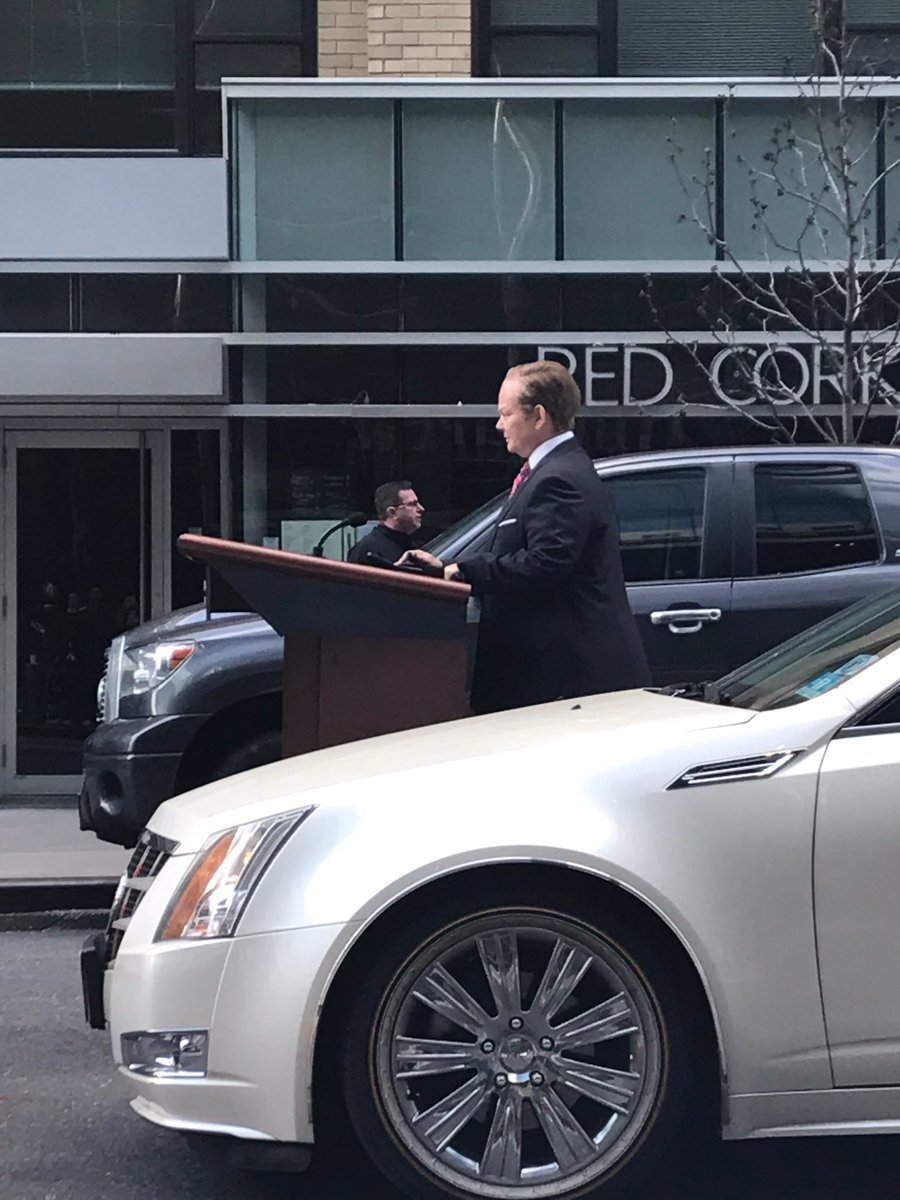
Um, Melissa McCarthy is filming outside the CNN building in NYC: image via Chris Cillizza @CillizzaCNN, 12 May 2017
Trump threatens to cancel White House briefings because it is ‘not possible’ for his staff to speak with ‘perfect accuracy’: Philip Rucker, The Washington Post, 12 May 2017
Since President Trump fired FBI Director
James Comey on May 9, the explanations for the dismissal have been
getting murkier. Now Trump has tweeted a threat to cancel press
briefings and a suggestion about "tapes" of his private conversations
with Comey.
Trump's comments come after his description of his decision to fire FBI Director James B. Comey in an NBC News interview Thursday flatly contradicted the accounts provided earlier by White House officials, including Vice President Pence, exposing their explanations as misleading and in some cases false.
In a pair of tweets sent Friday, Trump suggested he might do away with the daily press briefings at the White House and instead have his spokesmen communicate to the public only via “written responses.”
The explanations for Comey's firing from the Trump White House have shifted repeatedly since the move was announced late Tuesday afternoon, undermining the credibility of Pence as well as White House press secretary Sean Spicer, principal deputy press secretary Sarah Huckabee Sanders and counselor to the president Kellyanne Conway.
On Friday, Spicer told reporters that the president was “dismayed” at the focus on the accuracy of statements delivered by his spokesmen.
“The president is an active president. He keeps a very robust schedule,” Spicer said. “I think sometimes we don’t have an opportunity to get in to see him and get his full thinking.”
“There are times you read a story where someone is trying to pull apart one word one sentence … and make it a gotcha thing,” he added.
Initially, Trump's aides said the president acted simply at the recommendation of Attorney General Jeff Sessions and Deputy Attorney General Rod J. Rosenstein. After meeting with Trump, Rosenstein wrote a memorandum detailing what he considered to be mistakes in Comey's handling of the FBI's investigation into Hillary Clinton's use of a private email server as secretary of state.
By
Wednesday, White House officials were saying that Trump had
contemplated firing Comey for a long period of time, but made the final
determination after hearing from Sessions and Rosenstein.
All
along, Trump's spokesmen insisted that his decision was not shaped in
any way by his growing fury with the Russia controversy, including the
FBI investigation overseen by Comey into Russia's interference with the
2016 presidential election and whether there had been any coordination
with Trump associates.
Then
on Thursday, Trump told NBC anchor Lester Holt that the decision to
fire Comey was his alone and that he would have made it “regardless” of
what Rosenstein recommended. Furthermore, Trump told Holt that he had
been thinking of “this Russia thing with Trump” when he arrived at his
decision to remove the FBI director.
“In fact, when I decided to
just do it, I said to myself, I said, ‘You know, this Russia thing with
Trump and Russia is a made-up story; it’s an excuse by the Democrats for
having lost an election that they should have won,'" Trump said.
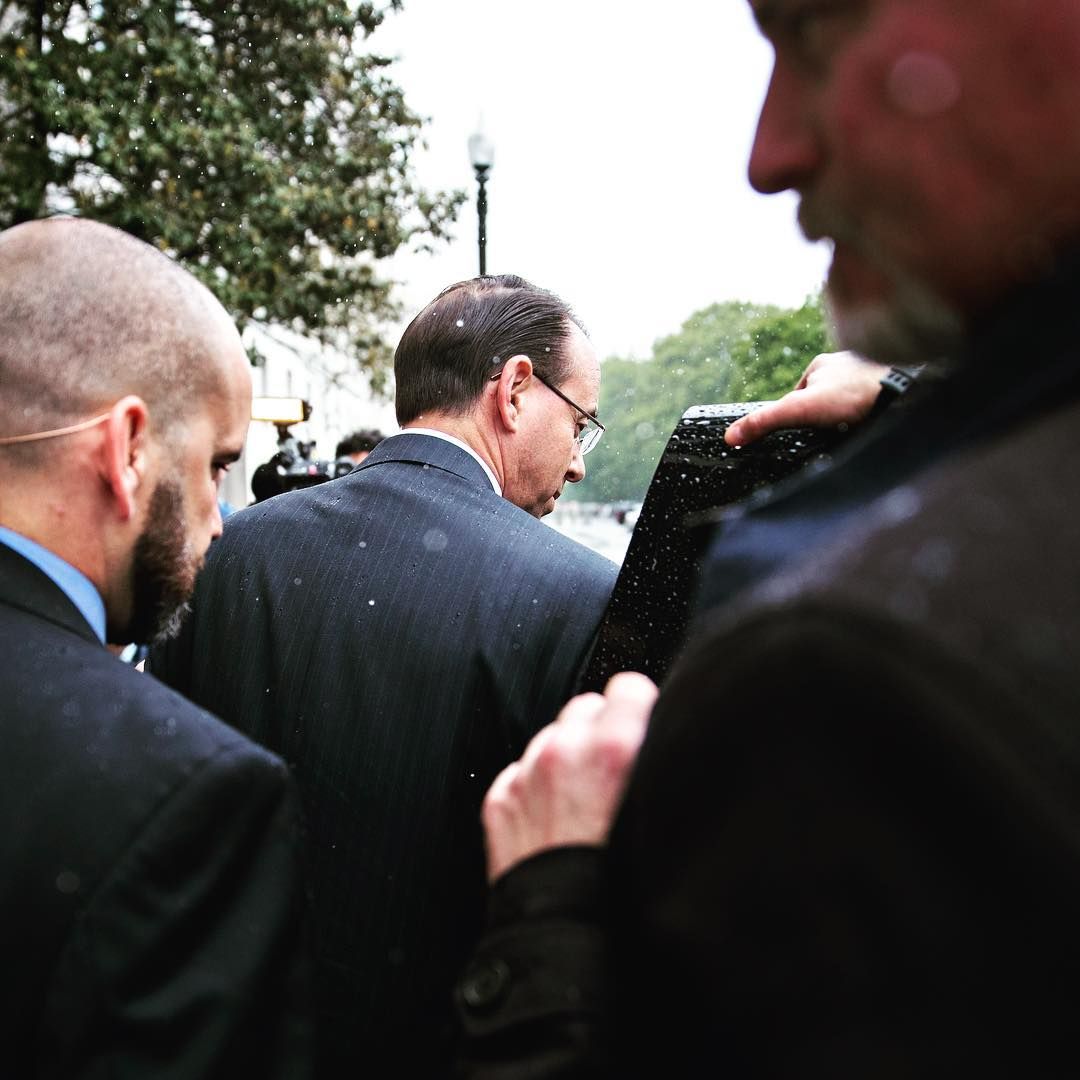
Of
all the collateral damage, isolates the embarrassment and ravaged
careers Trump leaves in his wake. Photo @drewharrer #RodRosenstein
#Comey: image via Reading The Pictures @ReadingThePix, 12 May 2017
'a non-denial denial' -- 'it took my breath away'
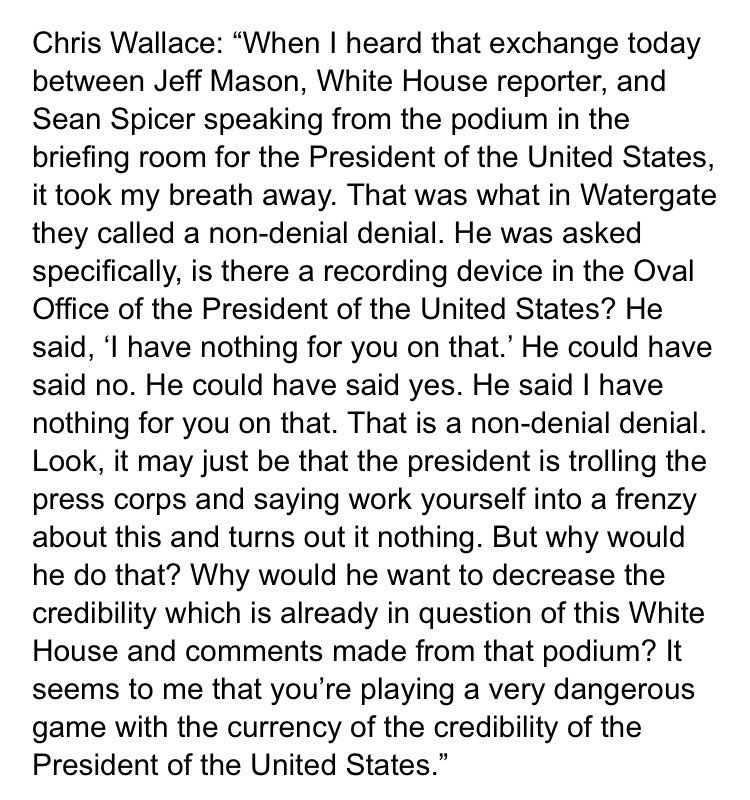
Striking words from Fox News's Chris Wallace: image via Michael M. Grynbaum @grynbaum, 12 May 2017
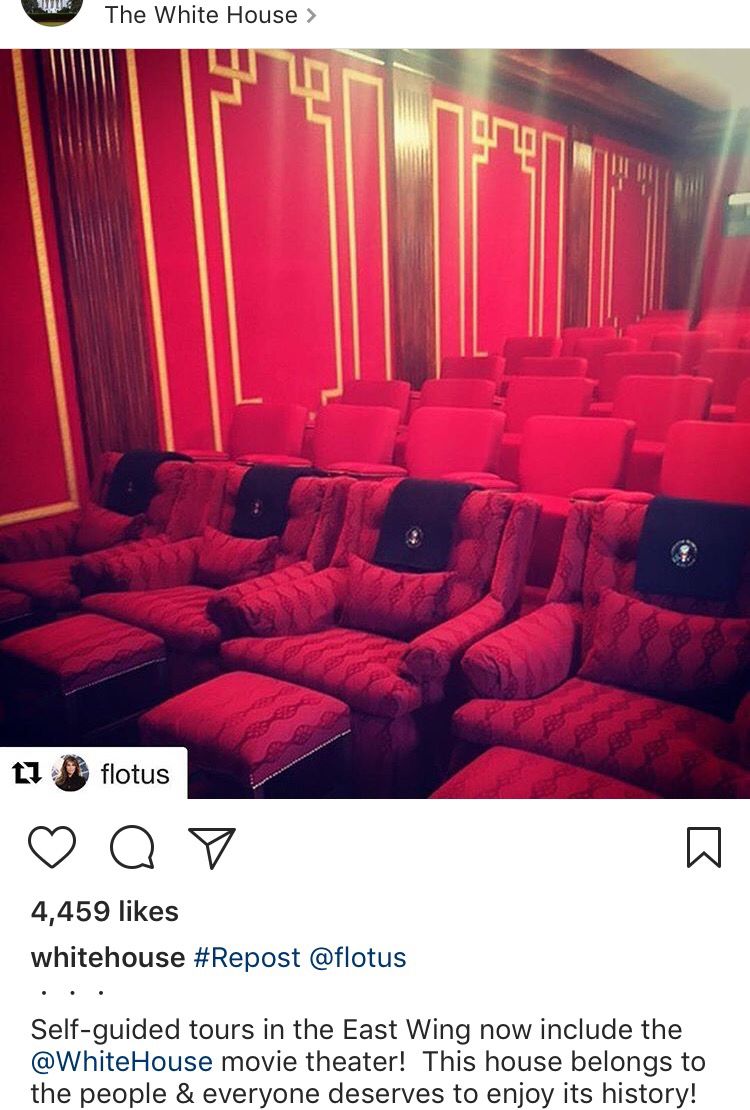
Emptiness.
@WhiteHouse as showpiece. How it calls up iconic Obama pics. Trumps
don't get visuals, purpose distinct from display. Photo @FLOTUS: image via Reading The Pictures @ReadingThePix, 12 May 2017
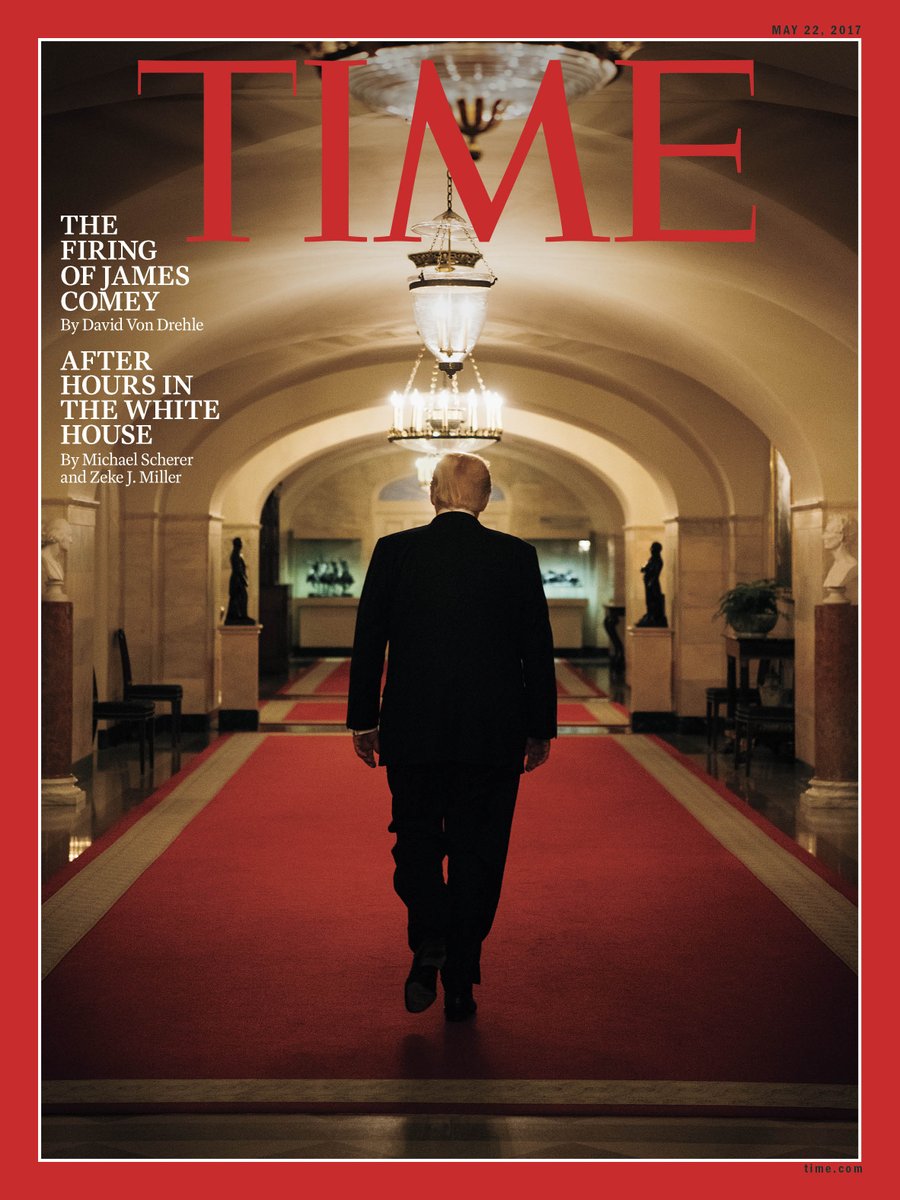
This week's @TIME cover: image via Zeke Miller @ZekeJMiller, 1 May 2017
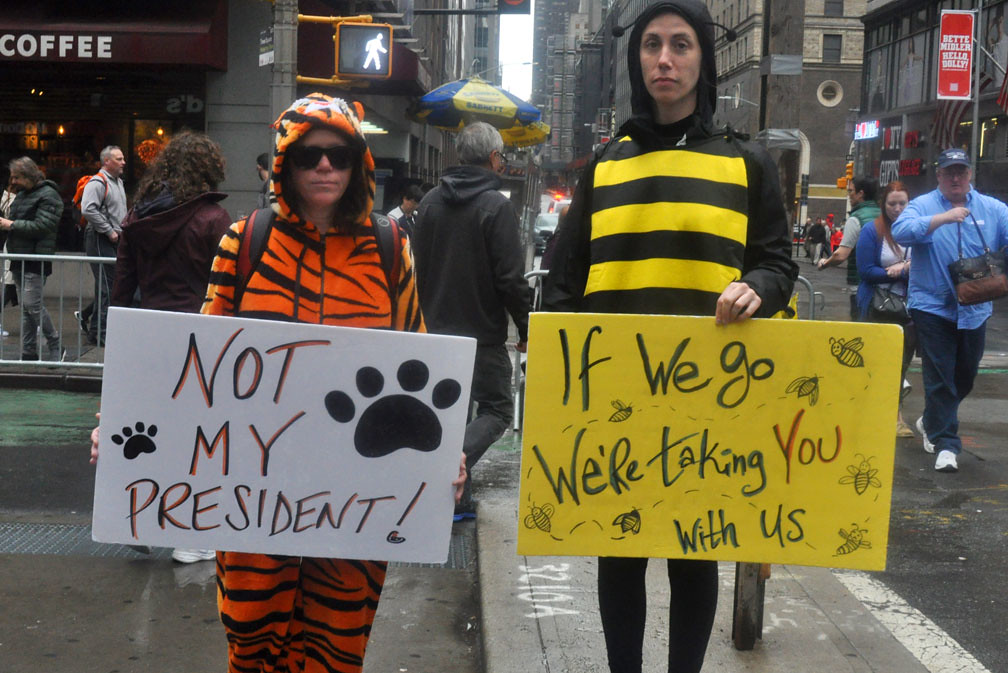
Tiger. May 13, 2017: Science March 2017: photo by Diane Greene Lent, 13 May 2017


This week's @TIME cover: image via Zeke Miller @ZekeJMiller, 1 May 2017

Tiger. May 13, 2017: Science March 2017: photo by Diane Greene Lent, 13 May 2017

[Untitled]: photo by aaronbergerfoto, 9 February 2017

[Untitled]: photo by aaronbergerfoto, 9 February 2017

[Untitled]: photo by aaronbergerfoto, 9 February 2017
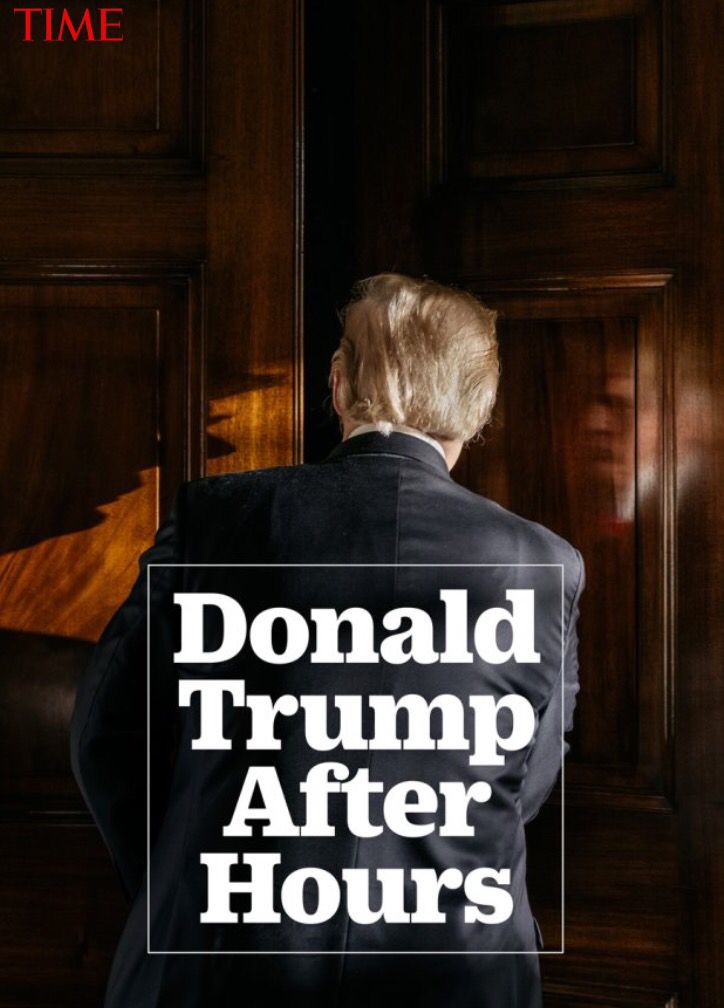
All quiet on bachelor front but @TIME's @WhiteHouse living quarters lead-in a suggestive one. President Hefner? [photo Benjamin Rasmussen]: image via Reading The Pictures @ReadingThePix, 13 May 2017

Trump After Hours: photo by Benjamin Rasmussen for TIME, 11 May 2017
From
where the 45th President works, eats and sleeps, everything is going
just great. Now if only everyone else would see it that way: A TIME
Exclusive: Donald Trump After Hours: Michael Scherer and Zeke J. Miller,
11 May 2017
In a few minutes, President Donald Trump will release a new set of
tweets, flooding social-media accounts with his unique brand of digital
smelling salts—words that will jolt his supporters and provoke his
adversaries.
Nearly a dozen senior aides stand in the Oval Office, crowding behind
couches or near door-length windows. This is the way he likes to work,
more often than not: in a crowd. He sits behind his desk finishing the
tasks of the day, which have included watching new Senate testimony
about Russian involvement in the 2016 presidential election, by signing
orders in red folders with a black Sharpie.

When he held the job, Barack Obama tended to treat the Oval Office
like a sanctum sanctorum, accessible only for a small circle of advisers
to break its silence on a tightly regulated schedule. For Trump, the
room functions as something like a royal court or meeting hall, with
open doors that senior aides and distinguished visitors flock through
when he is in the building.
In practice, it feels much like his old corner office on the 26th
floor of Trump Tower, minus all the clutter of memorabilia, a place to
convene an audience, to broadcast his exceptionalism, to entertain, take
photos, amaze and make deals. Some aides still call him “Mr. Trump,”
and everyone turns to listen when he speaks. His presence always seems
to consume the room.
And the stream of visitors is constant. Just a few hours earlier,
National Security Adviser H.R. McMaster had stopped by with a foreign
military delegation. Vice President Mike Pence brought by the Prime
Minister of Georgia unscheduled for a photo. The New England Patriots
got to take pictures behind the desk recently, and the President says
the billionaire Ronald Lauder, a great collector of art, went crazy when
he saw the painting of George Washington above the fireplace. “Never
had people,” Trump likes to say of Obama’s use of the space. “I use the
room. I use it a lot. I had the biggest people in the country here.”
But right now, there is something else he wants to show. It’s down
the hall, in his private dining room in the West Wing, a few steps away.
As is often the case when reporters come through, he has a plan, a
story he wants to tell. Tonight, at dusk on May 8, he invites three TIME
correspondents for a tour of his home and office, followed by a
four-course dinner in the Blue Room, the oval-shaped parlor on the first
floor of the executive mansion. The first three months of his
presidency have been unsettling, a blur of confrontation, policy pivots
and regulatory revolution. Financial markets have climbed, cruise
missiles have fallen, and the world has watched with trepidation and
confusion. In less than 24 hours, Trump will
roil the nation again by announcing the firing of his FBI Director,
James Comey, who is leading an investigation of his campaign’s ties to
Russia. It will set off yet another firestorm. But for now, it’s
showtime once again.
“You’ll see something that is amazing. It just happened,” he says as he stands up from the desk. “Come on, I’ll show you.”

Trump, with Pence, watches a replay of Senate hearings from a private dining room near the Oval Office: photo by Benjamin Rasmussen for TIME, 11 May 2017
Each president leaves his mark on the building, and
Trump has wasted little time making his. The modern art favored by the
Obama family is mostly gone, replaced with classic oils, including
portraits of Trump’s favorite predecessors, like Andrew Jackson and
Teddy Roosevelt. Gold curtains have replaced the maroon ones in the Oval
Office, and military-service flag stands have been added around the
room, topped by battle ribbons and held in place by heavy brass bases
that Trump praises to visitors.
But few rooms have changed so much so fast as his dining room, where
he often eats his lunch amid stacks of newspapers and briefing sheets. A
few weeks back, the President ordered a gutting of the room. “We found
gold behind the walls, which I always knew. Renovations are grand,” he
says, boasting that contractors from the General Services Administration
resurfaced the walls and redid the moldings in two days. “Remember how
hard they worked? They wanted to make me happy.”
Trump says he used his own money to pay for the enormous crystal
chandelier that now hangs from the ceiling. “I made a contribution to
the White House,” he jokes. But the thing he wants to show is on the
opposite wall, above the fireplace, a new 60-plus-inch flat-screen
television that he has cued up with clips from the day’s Senate hearing
on Russia. Since at least as far back as Richard Nixon, Presidents have
kept televisions in this room, usually small ones, no larger than a
bread box, tucked away on a sideboard shelf. That’s not the Trump way.
A clutch of aides follow him,
including McMaster, Pence and press secretary Sean Spicer. The President
raises a remote and flicks on the screen, sorting through old
recordings of cable news shows, until he comes to what he is after: a
clip from the Senate hearing earlier in the day, as broadcast on Fox
News. The first clip he shows is of South Carolina Senator Lindsey
Graham speaking to former Director of National Intelligence James
Clapper. Graham asks if Clapper stands by his statement that he knows of
no evidence of collusion between the Trump campaign and Russia. Trump
waits quietly, until Clapper admits that nothing has changed. Trump
pantomimes a sort of victory.
“Yes. He was choking on that,” the President chortles. “Is there any
record at all of collusion? He was the head of the whole thing. He said
no. That’s a big statement.” Trump leaves unmentioned the fact that
there is an ongoing FBI counterintelligence investigation into
possible collusion, which has not yet reached any conclusions. Nor does
he note that Clapper, out of government for nearly four months, could
not possibly know everything the FBI has learned, and likely would have
not known all even when he was in office. Trump also leaves unmentioned
that he had a meeting that day with his new Deputy Attorney General
about firing Comey, the director of that investigation.
But for now, Trump is focused on his TV. He watches the screen like a
coach going over game tape, studying the opposition, plotting next
week’s plays. “This is one of the great inventions of all time—TiVo,” he
says as he fast-forwards through the hearing.
The next clip starts to play, this time showing Iowa Senator Chuck
Grassley asking Clapper and former acting Attorney General Sally Yates
if they ever requested that the names of Trump, his associates or
members of Congress be identified by name, or unmasked, in a legal
intelligence intercept. “Watch them start to choke like dogs,” Trump
says, having fun. “Watch what happens. They are desperate for breath.”
Clapper, on the screen, pauses several beats to search his memory.
“Ah, he’s choking. Ah, look,” the President says. After a delay, Clapper
finally answers, admitting that he had requested an unmasking, which
would have been a routine occurrence in his former job. The running
Trump commentary continues. “See the people in the back, people are
gasping,” he says, though it’s unclear who he is referring to on the
screen. He also mentions the sound of photographers’ cameras clicking on
the television.
Moments later, the President watches as both Clapper and Yates
testify that they had reviewed intercepts containing the unmasked
identities of Trump, his associates and members of Congress. This, to
Trump, is yet another victory, the lead-lined proof of his still
unproven claim that Obama surveilled him before he was sworn in. “So
they surveilled me,” he says. “You guys don’t write that—wiretapped in
quotes. They surveilled me.”

President Trump walking to the residence: photo by Benjamin Rasmussen for TIME, 11 May 2017
The powers of the presidency are vast, but Trump has
discovered in these first months in office that they do not include
much influence over how his words and actions are consumed by the
American people. Among the many frustrations, none seems to burn quite
as much as the disrespect he feels he has received from the press, which
has steadily failed to reflect his version of reality. The story he
wants told is not the one the nation reads and sees.
In his view, the past months have included a steady string of
successes, broken only by occasional missteps, which are invariably
overplayed and misinterpreted. After a rough start, an Obamacare
replacement passed the House. A red line against the use of chemical
weapons has been re-established in Syria. Political prisoners have been
released from Egypt.
China has offered new cooperation to prevent the further development
of North Korea’s nuclear arsenal. American companies have been
arm-twisted into staying in the country, while Trump has personally
inserted himself into a handful of negotiations over weapons systems and trade agreements to try to get Americans a better deal.
But the turmoil of his presidency has so far dominated the headlines,
pushing out much of what he considers to be the good news he thinks he
deserves. The press has focused on the disruption; his false statements
in office; the fear and dislocation in immigrant communities; the many
campaign promises, from eliminating the export-import bank to declaring
China a currency manipulator, on which Trump has equivocated.
Of the many firestorms he has had to fight, none has burned as
brightly as the tweets he sent accusing Obama of wiretapping him at
Trump Tower. The head of the FBI, Comey, whom he had discussed firing
earlier that day, had testified that there is no evidence that this
happened. So he has been arguing that the wiretapping he alleged could
include routine surveillance, which was not directed by the White House,
of legal surveillance targets who spoke with people in his campaign.
That’s why he cares so much about the “unmasking” testimony. He seeks
vindication.

An elevator in the private residence: photo by Benjamin Rasmussen for TIME, 11 May 2017
“The truth is, I got a raw deal,” he says later in the evening, the
frustration unmistakable for a man who has spent so much of his life
grading himself by headlines. The détente with the press after the
election that he had hoped for never came. “It’s gotten worse,” he says.
“It’s one of the things that surprises me.”
To cope with this new reality, the President says he is trying a
mindfulness trick: he has tried to tune out the bad news about himself.
“I’ve been able to do something that I never thought I had the ability
to do. I’ve been able not to watch or read things that aren’t pleasant,”
he will say later in the night, listing off the networks he tries to
tune out and the newspapers he struggles to skim. Of course, as his
public outbursts indicate, he does not always succeed, but he says he no
longer feels a need to know everything said about him. “In terms of
your own self, it’s a very, very good thing,” he says. “The equilibrium
is much better.”
The following day, the news of the Senate hearings will once again
fail to comport with the meaning he derived from his TiVo. The focus
instead will be on Yates’ description of how she warned the White House
about the apparent duplicity of Trump’s first National Security Adviser,
Michael Flynn, who misled the Vice President about his contacts with
Russia. Flynn is now facing an investigation into foreign payments that
officials say he failed to report.
Trump can’t do anything about that, for the most part. But he can
still tweet. So now he walks out of his dining room, followed by the
same substantial entourage of senior aides. Back in the Oval Office, he
checks in with his waiting staff. “Did you get that stuff out?” the
President asks of the tweets he had prepared. “The Russia-Trump
collusion story is a total hoax,” one reads, “when will the taxpayer
funded charade end?” Dan Scavino, his social-media director, is sitting
on the couch. “Yes, sir. Instagram, Facebook, Twitter. It’s everywhere,”
he says.
“The real story is the surveillance,” the President responds, before
ribbing his staff. “But my comms people can’t get it out.” They start
laughing. But there are even more pressing matters. Trump turns to
McMaster, who was the subject of a column on Bloomberg earlier in the
day, quoting anonymous sources saying the President was unhappy with his
performance. It’s another story that Trump declares false. The
President thinks he knows where the leak is coming from, which provides
some comfort. But for now, he will counterprogram: “I’m so happy with
him,” Trump says. “I think he’s wonderful.” And with that, he decides,
it is time to go home.

President Trump walks down the Grand Staircase: photo by Benjamin Rasmussen for TIME, 11 May 2017
All Presidents must contain multitudes. But for
Trump, the situation is, as usual, bigger, bolder and more complex. At
core, he has always been a transactional person. That means he reacts,
often in the moment, to the information and people around him. He comes
to office with no well-formed ideology and with an evolving
understanding of history and government, and a clear goal of using his
business acumen to help his most fervent supporters. He is extremely
confident in his own judgment, often willing to act alone, to take
risks, even when those around him plead caution.
During the campaign, this proved to be an enormous asset, allowing
him to dispatch more than a dozen opponents and remake the rules of
presidential politics. Life in the White House, he has found, is
somewhat more restrictive, with far greater stakes. Escalating conflict,
which works so well on the campaign trail, has not always yielded
results now that he is governing. And at several points, he has had to
absorb the fact that the President isn’t all-powerful, with his orders
blocked by the courts, his wish lists discarded by Congress, a steady
stream of leaks from the intelligence community sparking turmoil in his
Administration and a media that writes and broadcasts as it pleases.
From the Oval Office, it’s a 60-yard stroll down the sloped colonnade
to the Palm Room doors that lead into his government-funded mansion.
An elevator operator is waiting for him off the ground-floor hallway.
“Stop up at the second floor, would you?” asks the President. Then he
turns to his guests. “Did you ever see the Lincoln Bedroom?” The Vice
President, who has walked over as well, takes the stairs. As a matter of
protocol, to ensure continuity of government, the two men do not share
the same airplane or ride the same lift.
Trump has lived most of these first months alone in his upstairs
palace, inhabiting 20,000 square feet of the residence by himself most
weeknights, catered to by a household staff that totals nearly 100,
including a couple of valets and a handful of butlers. During the Obama
years, the second and third floors of the
executive mansion were treated as private housing, not a governing
space. Obama’s daughters and mother-in-law lived in a few of the extra
bedrooms. The first time most staff ever got to see the place was the
night Obamacare passed in March 2010, when the Obamas decided to throw a
party.
The current President has taken a different tack, inviting staff up
regularly for meetings; hosting dinners for old friends, staff and
supporters; giving tours; calling foreign leaders from Lincoln’s old
desk in the Treaty Room, where he will also stay late into the night
doing work with his longtime personal aide and bodyguard Keith Schiller.
“The phone system is so amazing here,” Trump confides as he enters the
space. “This one phone, it splits the words”—a reference to scrambling
technology meant to disrupt eavesdropping.
The space is far larger than it looks from outside, with a long great
hall, appointed with freshly cut yellow flowers. “This is the kitchen
here, a beautiful kitchen,” he says. “This is the dining room. Here is a
room where we have a guest room.” Trump shows off the Presidential Seal
over the closed door to his suite and the Yellow Oval Room, which opens
out onto the Truman Balcony, where Trump’s security detail has
discouraged him from spending too much time.
It is the Lincoln Bedroom, however, that for him holds the most
symbolic value, with its display of the Gettysburg Address. “Isn’t this
incredible?” Trump asks. “He was very tall, and this bureau was built
for him, with a tall mirror.” If there is a pressure from the office
that he feels in this building, this is where it manifests. The current
President talks sympathetically about Lincoln’s struggles, the death of
his 11-year-old son in this building, the ghosts that haunted him
afterward. “He was a great genius, but he had some difficulty,” Trump
explains. “He was very distressed after his son died. They say
melancholy.”
But this is not something to dwell on. A few moments later he is back
downstairs, gazing at the East Room. Presidents from Bill Clinton to
Harry Truman have joked that the White House was a sort of prison. He
doesn’t feel that way, he says. “You have to be a certain type of
person,” he explains. “People have no idea the beauty of the White
House. The real beauty of the White House.”

The President has been studying White House history as he puts his personal touch on the building: photo by Benjamin Rasmussen for TIME, 11 May 2017
In about four weeks, Trump expects his wife and
youngest son to join him in the mansion, and when they arrive, life is
almost certain to change. But tonight, it’s all business, and the Blue
Room has been lit with nearly a dozen votive candles, the table is set
with yellow roses, and the Washington Monument is neatly framed in the
South window.
The waiters know well Trump’s personal preferences. As he settles
down, they bring him a Diet Coke, while the rest of us are served water,
with the Vice President sitting at one end of the table. With the salad
course, Trump is served what appears to be Thousand Island dressing
instead of the creamy vinaigrette for his guests. When the chicken
arrives, he is the only one given an extra dish of sauce. At the dessert
course, he gets two scoops of vanilla ice cream with his chocolate
cream pie, instead of the single scoop for everyone else. The tastes of
Pence are also tended to. Instead of the pie, he gets a fruit plate.
Trump sees the dinner with TIME as a pitch meeting as much as
anything else, with an audience that he does not entirely trust. He
wants to go through his many accomplishments, regularly deflecting
questions to keep on task. “The big story is that we are doing a good
job for the country,” the President says. “We’re cutting costs, big, big
costs.” He runs through the tales of his renegotiations with Lockheed
and Boeing
on the F-35 and F/A-18 Super Hornet fighters. He speaks of asking
Apple’s Tim Cook to build new manufacturing plants in the U.S. He talks
of his plans to renegotiate any future military contracts to make sure
they have fixed prices.
At length, he discusses the small details of military procurement,
including the reasons why the more costly digital catapult systems on
new aircraft carriers don’t work as well as the old steam-driven
systems. “Time and material means you’re going to get your ass kicked,”
he says of the common government contracting method, which often leads
to cost overruns. “Who ever heard of time and material?” He marvels at
the technology behind the cruise missiles he launched on an airfield in
Syria, noting their ability to maneuver to destroy planes hiding under
concrete shelters. He even brings up his efforts to ensure that an
African leader, from a country he declines to name, can buy American
military equipment despite decades-old human rights concerns.

The President often gives tours of the mansion to dinner guests: photo by Benjamin Rasmussen for TIME, 11 May 2017
This is the part of the job that he has clearly come to enjoy,
playing businessman for the American people. He brags about the close
relationships he believes he has formed with foreign leaders,
complimenting Germany’s Chancellor Angela Merkel on inviting his
daughter Ivanka to speak overseas. He boasts of convincing Egypt’s
leader, General Abdul Fattah al-Sisi, to release several political
prisoners, including an American. He even runs through the many ways he
has revised the rules of engagement in the war on the Islamic State.
“They keep coming to me, at weird times too,” he says of requests for
approval for drone strikes and Special Forces raids in his earliest days
in office.
His priority was ensuring that the military didn’t wait long for the
operations to commence. “I authorized the generals to do the fighting,”
he says. Trump has shifted the authority for final approvals from the
White House back to combatant commanders. Other Obama-era restrictions,
like strict force-management levels in Syria, proscribing the number
of troops or vehicles that can be used at any one time, have been
relaxed. As a result, the reliance on foreign contractors to support
U.S. forces has ebbed. He mentions the recent death of a high-ranking
Islamic State fighter and promises more to come.
As the dinner goes on, he loosens up, but only a little. He admits a
few small mistakes, including a misstep in the fight in the House to
repeal Obamacare. “There was a mistake. We set a date,” he says of the
first deadline by which he hoped to get a vote on the floor in
mid-March. “And when we didn’t vote, everyone says, ‘Trump fails on
health care.’”
He joins Pence in describing the hours he spent on the phone with dozens of lawmakers, cajoling them from no to yes. Asked if dealmaking is any different in Washington than in real estate or entertainment, he has a quick answer. “It’s always the same,” he says. “You have to know your subject.”

Left: President Trump walks along the Colonnade. Right: Trump gives a thumbs up: photo by Benjamin Rasmussen for TIME, 11 May 2017
Then there are the emotional costs of the job, he says. He describes
his visit last month to Walter Reed National Military Medical Center,
just outside of Washington, where he met with wounded service members
from Iraq and Afghanistan, as “incredible and terrible.” He met one
wounded warrior who lost his leg but is learning to walk again with a
prosthesis. “All he wants to do is go back. It’s amazing,” Trump says.
“The spirit is so incredible.”
And for the man who centered his campaign around the notion of
“America first,” he explains that he is deeply moved by the violence
against children in Syria, particularly Bashar Assad’s use of chemical
weapons on his people. “I mean, when he actually said they were child
actors, who would even think of that?” Trump says with disgust of the
young bodies that were shown on television. “I felt something had to be
done.”
It would be wrong to say that the presidency has softened Trump. His
willingness to fight is unabated and unfiltered. But he is no longer
tethered to a one-way strategy of disruption and conflict. He is willing
to back down at times, to adjust course. His chief strategist, Stephen
Bannon, who has argued for a dark, generational clearing away of old
institutions, found himself effectively demoted, though he remains an
important player.
On a wide variety of policy issues, Trump has edged
toward the center, most notably allowing Congress to negotiate a
spending bill that left out a number of his priorities.
When asked directly if he feels his Administration has been too
combative, he makes a brief allowance. “It could be my fault,” he says.
“I don’t want to necessarily blame, but there’s a great meanness out
there that I’m surprised at.” The inner conflict is clearly evident.
This is the same man who just a couple hours earlier had joked about
former federal officials choking “like dogs.”

Some evenings, Trump works the phones from his residence before retiring for the night: photo by Benjamin Rasmussen for TIME, 11 May 2017
One senior White House official recently outlined the three rules of
Trump for a group of reporters: When you’re right, you fight.
Controversy elevates message. And never apologize. All of these rules
have survived his time in office, if in slightly more modest forms.
After bringing new levels of combativeness to the political process,
“the only way you survive is to be combative,” Trump says now. “I’ll
read stories in the New York Times that are so one-sided. Hey, I know
when I am successful. I know victory.”
But that is not all he has to say. Before the dinner breaks up, the
President begins to muse about an alternative world to the one he has
helped create. “It never made sense to me, the level of animosity,”
Trump says. “All you want to do is, like, Let’s have a great military.
Let’s have low taxes. Let’s have good health care. Let’s have good
education.”
For a moment, he seems to be proposing a more civil public space in American democracy, one the Trump campaign did little to foster and which the Trump Administration is unlikely to experience.
Is this real introspection or just more performance for his guests?
The answer isn’t long in coming. Within a day of the plates being
cleared away, Trump takes to Twitter to attack “Cryin’ Chuck Schumer,”
the Democratic Senate leader. He belittles Connecticut Senator Richard
Blumenthal for once misrepresenting his military service—“he cried like a
baby and begged for forgiveness.”
No truce is around the corner. President Trump fights on.
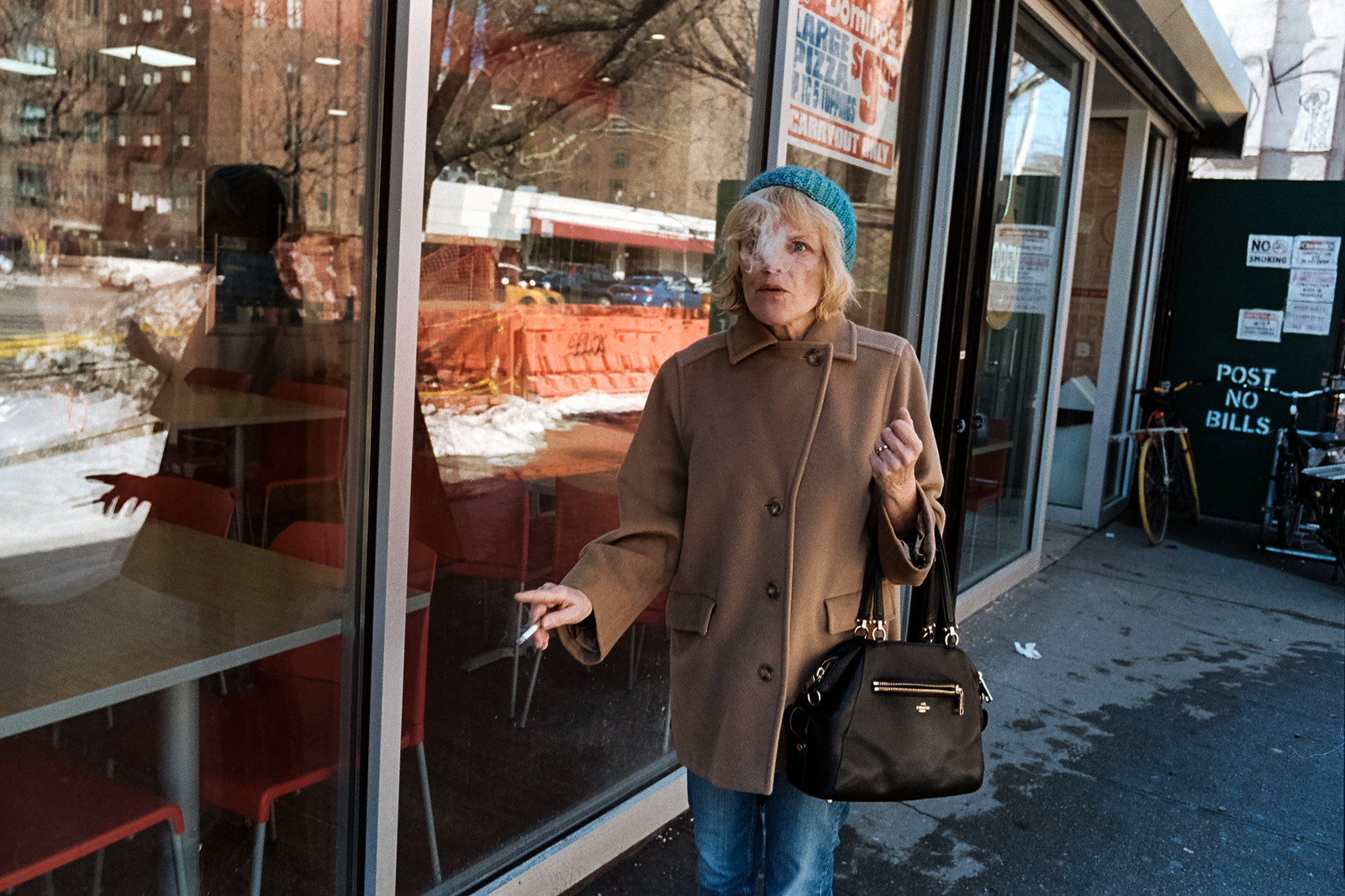

[Untitled]: photo by aaronbergerfoto, 15 April 2017

[Untitled]: photo by aaronbergerfoto, 15 April 2017

[Untitled]: photo by aaronbergerfoto, 15 April 2017
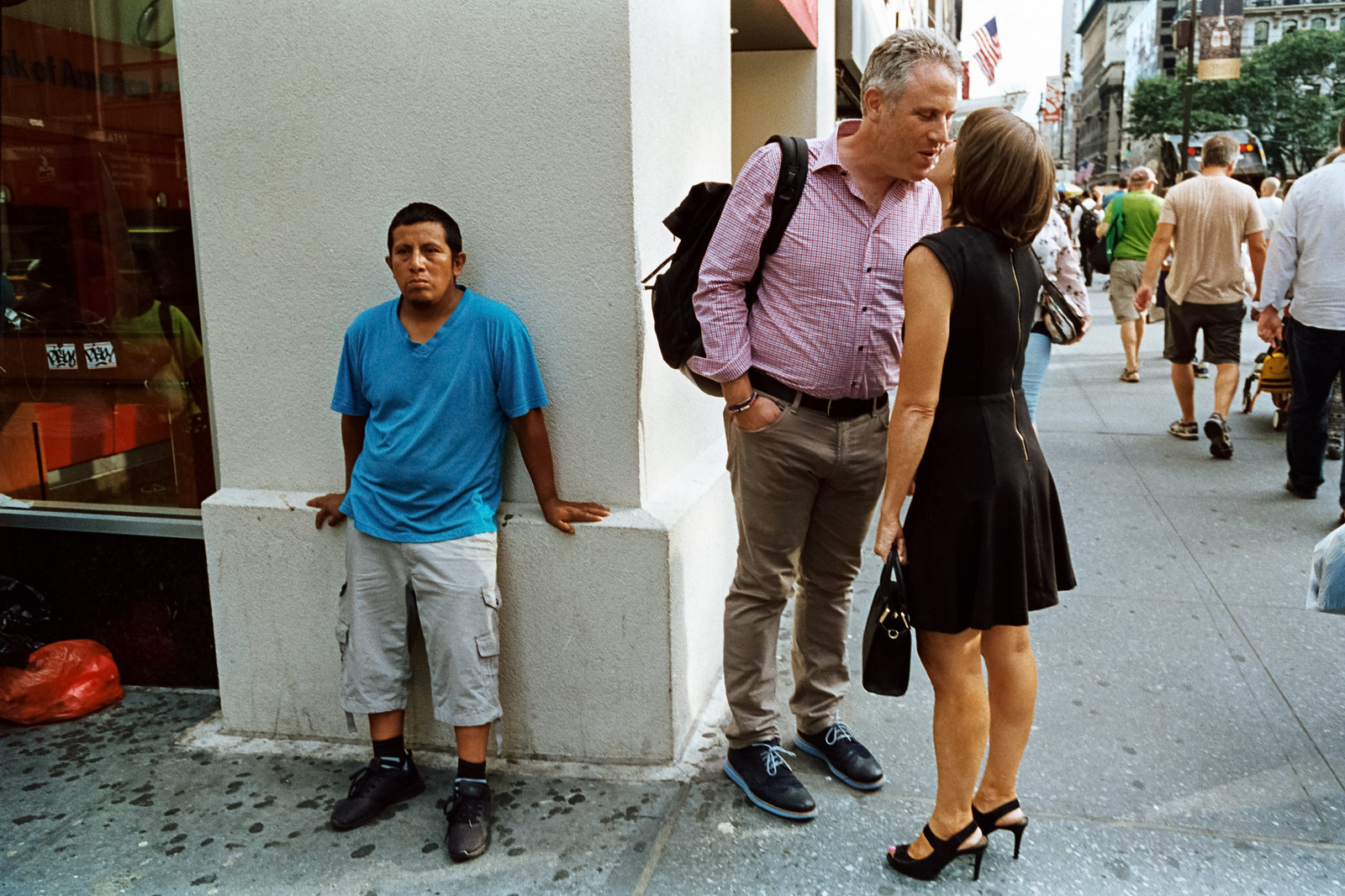
[Untitled]: photo by aaronbergerfoto, 18 August 2016

[Untitled]: photo by aaronbergerfoto, 18 August 2016

[Untitled]: photo by aaronbergerfoto, 18 August 2016
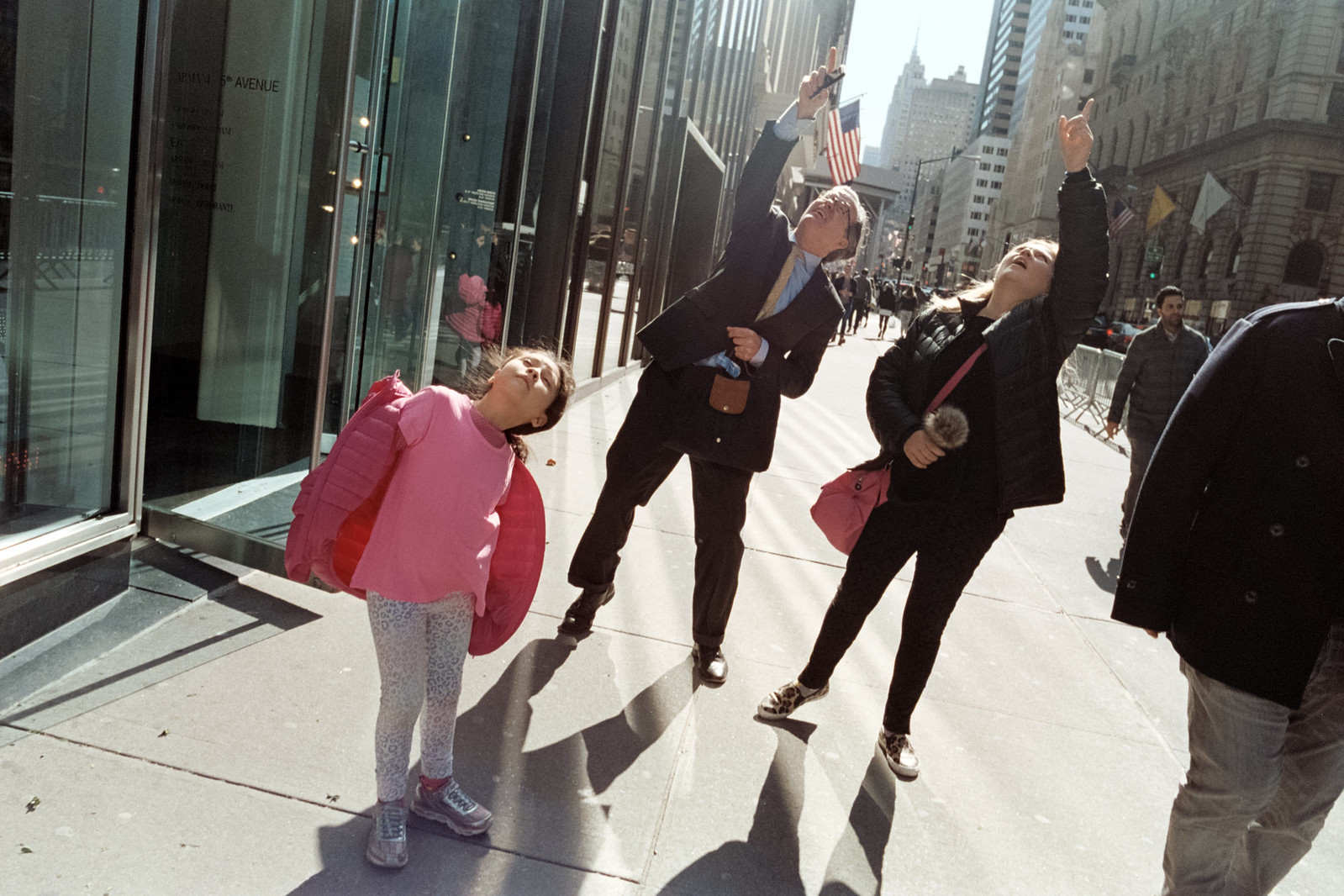
[Untitled]: photo by aaronbergerfoto, 10 March 2017

[Untitled]: photo by aaronbergerfoto, 10 March 2017

[Untitled]: photo by aaronbergerfoto, 10 March 2017
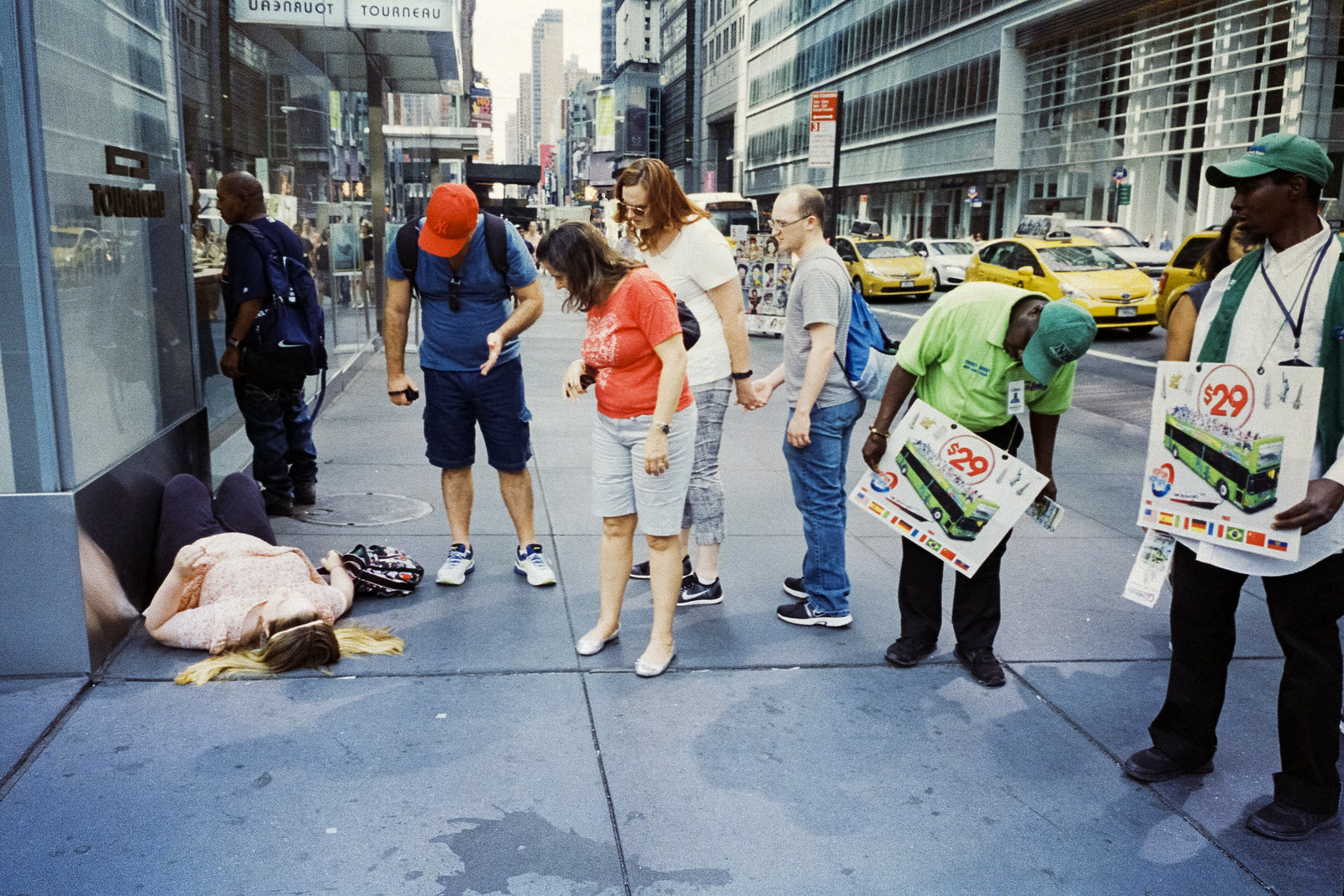
[Untitled]: photo by aaronbergerfoto, 18 December 2016

[Untitled]: photo by aaronbergerfoto, 18 December 2016

[Untitled]: photo by aaronbergerfoto, 18 December 2016

[Untitled]: photo by aaronbergerfoto, 18 December 2016

[Untitled]: photo by aaronbergerfoto, 18 July 2016

[Untitled]: photo by aaronbergerfoto, 18 July 2016

[Untitled]: photo by aaronbergerfoto, 18 July 2016

[Untitled]: photo by aaronbergerfoto, 7 May 2017

[Untitled]: photo by aaronbergerfoto, 7 May 2017

[Untitled]: photo by aaronbergerfoto, 7 May 2017

[Untitled]: photo by J Ward, 11 May 2017

[Untitled]: photo by J Ward, 11 May 2017

[Untitled]: photo by J Ward, 11 May 2017

Albuquerque, New Mexico: photo by Jorge Guadalupe Lizárraga, May 2017




1 comment:
When photographer Benjamin Rasmussen learned that... he would get a tour of the White House and the residence with President Donald Trump as his guide, he turned to an unlikely resource to plan: Gay Talese’s celebrated profile Frank Sinatra Has a Cold. “The whole premise is that Frank Sinatra will not give access to Gay Talese, so he’s having to figure out how create this sense of him without actually being able to interview the man,” he tells TIME. “I was thinking a lot about that idea: ‘How do you give a sense of this person in this space that represents, for the country, leadership and, for him, where he lives.”
In an interview, Trump defined the White House as a sort of shelter – a cocoon. Rasmussen wanted to convey this sense of regal seclusion in his photographs. “What does it mean to be in space where you’re making some of the most [important?] decisions in the world but can’t leave [because] you’re physically surrounded by people who are telling you that they hate you, that they disagree with you and that they think you’re doing a bad job,” he says. “Regardless of what you think of his politics, it feels like a really lonely position.”
To get that message across, Rasmussen chose to shoot for the mid-tones, giving his images a bit of warmth without drama. “I chose to embrace, to use the light that he’s using when he’s existing there as my main light,” he says, choosing to maintain a “level of formality with everything very straight and very strict.”
Trump can also be a tough man to photograph – he prefers one profile to the other and tends to favor certain fixed facial expressions. Rasmussen knew all that ahead of time, but he still struggled to create a documentary-like depiction of the day’s events. “I was trying that consistency throughout the shoot as we were moving so insanely fast. Most of it was shot in 10 to 15 seconds bursts,” he says. "It’s the most difficult shoot I’ve ever done."
The Story Behind TIME's White House Cover Shoot With Trump: TIME, 10 May 2017
Post a Comment